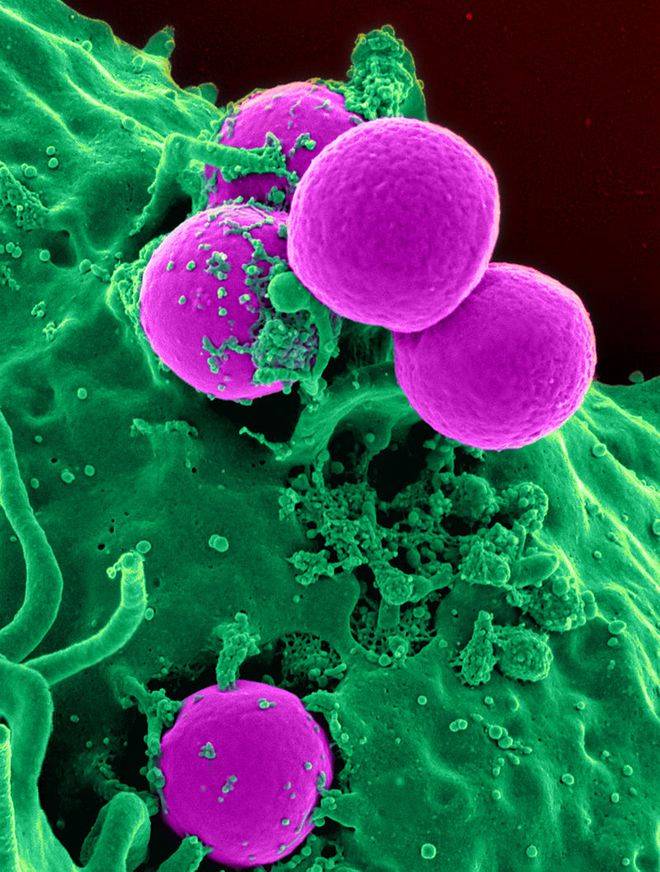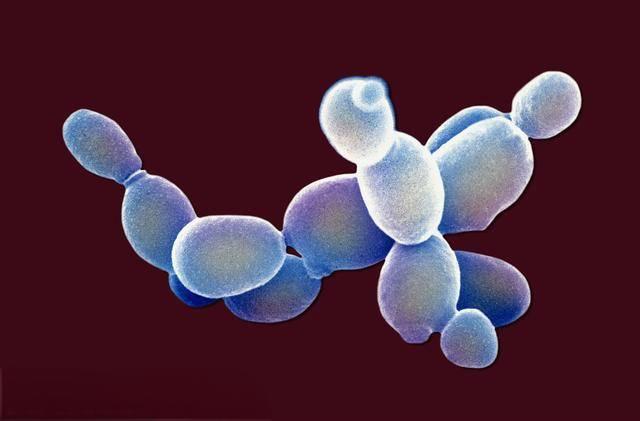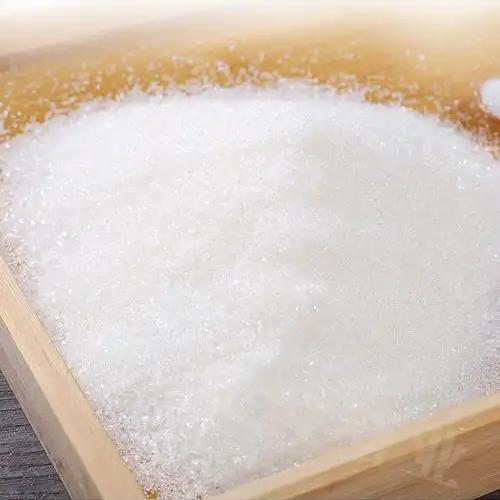How to Produce Xylitol Powder by Fermentation Method?
Xylitol is an important functional polyhydric alcohol. Xylitol does not require insulin to metabolize in the body, does not raise blood sugar levels after consumption, and can be used in diabetic foods. It is not fermented by microorganisms in the mouth, preventing the development of tooth decay. Xylitol can also be used as an energy source for parenteral nutrition. It is precisely because of these functional properties that xylitol is widely used in the food and pharmaceutical industries.
There are three methods of producing xylitol: extraction, chemical synthesis and biosynthesis. Currently, industrial production mainly uses chemical synthesis. The biosynthesis method uses the reductase enzyme in microorganisms to produce xylitol, which can effectively reduce the production cost of xylitol. The fermentation method is a promising production method that not only has the potential to eliminate the xylose purification step, but also simplifies the xylitol separation step. Enzymatic synthesis of xylitol is a continuous and efficient production method achieved through metabolic balance of the xylose reductase coenzyme factor. This article focuses on the fermentation method of xylitol production and the factors affecting production.
1 Microorganisms for the fermentation method of xylitol production
1.1 Bacteria
Only a few bacteria can produce xylitol, such as Enterobacter liquefaciens, Myobactenum smegmatis, and Corynebacterium sp. Species such as M. smegmatis has a high ability to convert xylose to xylitol, with a conversion rate of up to 70%. When Escherichia coli is fermented in a medium with an initial xylose concentration of 100 g/L, the production rate of xylitol reaches 0.35 g/(L·h).
Most bacteria contain xylose isomerase, an enzyme that converts xylose to xylulose. Xylulose is further phosphorylated to 5-phospho-D-xyulose by xylulose kinase, and then enters the pentose phosphate pathway or is converted to 3-phosphoglycerate and acetyl phosphate by the action of xylulose 5-phosphate phosphoketolase. Strain of the genus Bacillus can metabolize xylitol, and these strains may have an enzyme redox system that coexists with or replaces the role of xylose isomerase. This system can reduce xylose to xylitol, which is then further oxidized to xylulose. Xylitol is only an intermediate product of bacterial metabolism.

1.2 Moulds
Some moulds can also ferment xylose to produce xylitol. In a medium containing xylose, some filamentous fungi, such as Penicillium, Aspergillus, Rhizopus, Colletotrichum, Byssochlamys or Neurospora spp., can produce low concentrations of xylitol. Xylitol (< 1 g/L) was detected after 2 days of aerobic cultivation of the Fusarium xysporum strain in a medium with an initial xylose concentration of 50 g/L. The petromyces albertensis strain reached concentrations of 39.8 g/L xylitol and 2.8 g/L xylulose after 10 days of cultivation in a medium with an initial xylose concentration of 100 g/L.
1.3 Yeast
Among microorganisms, yeast has a relatively superior ability to convert xylose to produce xylitol. Yeasts in the genus Candida, such as C. guilliermondii, C. tropicalis, C. mogii, and C. parasilosis, have a strong ability to convert xylose. Other yeasts with strong conversion abilities include
(1) the genus Debaryomyces, such as D. hansenii
2. the genus pachysolen, such as p. tannophilus
3. the genus saccharomyces
4. the genus schyzosaccharomyces
2. Fermentation process for producing xylitol
The process for producing xylitol by microbial fermentation is as follows:
2. Factors affecting the fermentation process for producing xylitol
2.1 Aeration rate
In some yeast cells, aeration stimulates sugar transport. Many strains such as Candida, Hanesula, Kluyveromyces and Pichia require oxygen for sugar absorption. Aerobic cultivation increases the conversion of xylose to xylitol, as the production of xylitol is directly linked to an increase in biomass and is strongly influenced by oxygen consumption. Some microorganisms are able to produce xylitol under microaerobic conditions. By studying the ability of C. guillermondii to produce xylitol from xylose and non-hemicellulosic sugars under microaerobic conditions, xylose fermentation resulted in a xylitol conversion rate of 0. 63 g/g xylitol yield and trace amounts of ethanol, while other sugars were converted to ethanol and biomass. Debaromyces hansenii strains require semi-aerobic conditions for xylitol production, as the reduced adenosine diphosphate coenzyme accumulated under aerobic conditions is completely reoxidized, resulting in the re-conversion of the produced xylitol to xylulose.
In general, maintaining a certain aeration rate can increase the conversion rate of xylitol, and a slight aeration rate is beneficial for xylitol production. However, for the cultivation of Pichia stipitis strains, the yield of xylitol is closely related to the lack of dissolved oxygen, while the xylitol conversion rate of Pichia tannophilus strains is higher under limited or anaerobic conditions. C. tropicalis can accumulate xylitol under limited oxygen conditions. When using yeast strains with the NADPH coenzyme for xylose reductase, the oxygen content must be controlled to avoid xylitol depletion. Under low oxygen conditions, the relatively high intracellular concentrations of NADPH and NADH accelerate the xylose reduction reaction and the accumulation of xylitol. In this case, NADH cannot be oxidized to NAD+, which causes the NADH/NAD+ ratio to rise and therefore inhibits the activity of xylitol dehydrogenase, which uses NAD+ as a coenzyme, to prevent the oxidation of xylitol. Table 1 summarizes the effects of aeration on the activities of xylose reductase and xylitol dehydrogenase.
To effectively produce xylitol, the first consideration is the rapid accumulation of microbial cells in the medium, which can be solved by the dissolved oxygen in the medium. However, because xylitol production requires anoxic conditions, maintaining high levels of dissolved oxygen in the medium throughout the culture process will lead to the re-oxidation of xylitol to xylulose. Therefore, high levels of dissolved oxygen should be maintained early in the culture, and then the respiratory rate of the microorganisms should be reduced during the xylitol production period.
2.2 Xylose concentration
The xylose concentration in the culture medium significantly affects the production of xylitol. Without increasing the aeration rate, an increase in the xylose concentration level will cause a decrease in the growth rate, which indicates that too high a xylose concentration will inhibit cell growth. A higher initial xylose concentration is favorable for xylitol production by osmotolerant microorganisms. A low xylose concentration will decrease the conversion rate because at low concentrations part of the carbon source will be used for cell growth, thus reducing the xylose available for conversion. In general, in batch processes, an increase in the initial sugar concentration can increase the production rate and conversion rate if the microorganism can tolerate high sugar concentrations and high osmotic pressures.
The maximum growth rate μmax of the C. guillemondii strain reached a maximum at an initial xylose concentration of 20 to 50 g/L. Studies on the C. mogii strain showed that the initial xylose concentration at which μmax reached a maximum was 5 to 10 g/L. Increasing the initial xylose concentration from 100 g/L to 150 g/L and culturing C. tropicallis, cell growth was vigorous, and the xylitol production rate increased from 1.78 g/(L·h) to 2.44 g/(L·h). In the fermentation process of strains such as P. tannophilus, C. tropicalis and C. guilliermondii, the optimum initial xylose concentrations were 60, 200, 100 and 200 g/L, respectively. When the initial xylose concentration was increased by 5 times, the product conversion rate increased by 5.5 times, and the unit medium consumption and product synthesis were also improved. The P. tannophilus strain accumulates xylitol at xylose concentrations above 10 g/L. Lower xylose concentrations (5–8 g/L) and fed-batch cultivation are more favourable for ethanol production and less favourable for xylitol production. tannophilus and the beer yeast (S. cerevisiae) strain, xylitol production increases with increasing xylose concentration. The effect of initial xylose concentration on xylitol production is shown in Figure 2. As can be seen, there is an inhibitory effect at an initial xylose concentration of 150–200 g/L, depending on the yeast strain and operating conditions.
At low xylose concentrations and low aeration rates, the cell concentration will be low. Under these conditions, it is possible to start producing xylitol early in the cell culture. At higher xylose concentrations and higher aeration rates, the cell concentration is high and xylitol production is also high.
When the initial xylose concentration was varied from 10 g/L to 300 g/L, the tolerance of Cadida guillermondii was studied. It was found that an increase in the sugar concentration accelerated the production of xylitol, and the conversion rate of xylitol increased with the increase of xylose in the medium. When the xylose concentration was increased to 300 g/L, the xylitol conversion rate reached a value of 0. 75 g/g, reaching 82.6% of the theoretical conversion rate. The xylitol yield reached a maximum at a xylose concentration of 200 g/L, at which time the xylitol production rate was 2.4 times that at a xylose concentration of 10 g/L. Contrary to xylitol production, an increase in xylose concentration inhibited cell growth. Cell growth rates peaked at xylose concentrations of 20 g/L to 50 g/L. In the production of xylitol by the Petromyces albertensis strain, the xylitol conversion rate peaked at a xylose concentration of 100 g/L and began to decrease above 150 g/L. This may be due to the effect of osmotic pressure on the cells or the negative effect of the substrate on the D-xylose metabolic enzyme.
2.3 Nitrogen source
Nitrogen source and aeration rate are very important for the production of xylitol by some yeast strains. In brewer's yeast, the pentose phosphate pathway is regulated by nitrogen, and it has been found that ammonium salts can stimulate the oxidative pentose phosphate pathway. The deoxy of 6-phospho-D-glucose is usually inhibited by NADPH. In the P. tannophilus, binding of ammonium salts stimulated growth, reduced the inhibition of 6-phospho-D-glucose dehydrogenase by NADPH, and therefore increased the activity of the pentose phosphate pathway. Organic nitrogen sources can increase the xylitol yield of C. shehatae.
By comparing eight inorganic nitrogen sources and four organic nitrogen sources, it was found that ammonium salts are the best inorganic nitrogen sources and yeast extract is the best organic nitrogen source. When using these two nitrogen sources, the xylitol conversion rates were 16. 7g/L and 30.6g/L, respectively. Haritsu et al. used 3, 10, and 20g/L yeast extract as nitrogen sources, respectively, and found that the xylitol production rate was 1.78 g/(L·h) at a yeast extract concentration of 20g/L, an aeration rate (90 % oxygen) was 400 mL/min and the initial xylose concentration was 100 g/L, the xylitol production rate was 1.78 g/(L·h), reaching a maximum value. In Pichia strains, the formation of polyols is greatly affected by the carbon-nitrogen ratio, and this strain produces more polyols in a low-nitrogen medium than in a high-nitrogen medium.

2.4 Other sugars in the medium
The addition of glucose to the substrate has a counterproductive effect on the production of xylitol by yeast fermenting xylose. For example, glucose inhibits the utilization of xylose by Candida and Schizosaccharomyces. This is mainly because these species assimilate glucose, mannose and galactose faster than xylose. These hexoses are mainly used for the growth of yeast cells, and only a small amount of the corresponding polyols is accumulated. The inhibitory effect of glucose on xylose consumption only reaches a maximum after a very short time. As soon as the glucose concentration decreases to a certain value, the conversion of xylose recommences immediately. This short transition period and the rapid recovery of xylose uptake indicate that the regulatory mechanism is not metabolic product inhibition. This finding also supports the view that under glucose-rich conditions, the main control factor for xylose transport is inhibition rather than inactivation and blockage.
When a Candida parapsilosis strain was used to ferment a glucose and xylose mixture, it was found that glucose was first consumed. The reason why xylitol production does not decrease when the glucose content is below 5 g/L is that glucose is metabolized aerobically and does not produce ethanol. However, when the glucose content exceeds 5 g/L, the excess is metabolized anaerobically to produce ethanol. This reaction is a reduction reaction, just like the reduction of xylose to xylitol, and the two compete for the redox potential, resulting in a decrease in xylitol production.
Cadida guillermomdii was evaluated for its ability to ferment non-xylose sugars such as glucose, mannose, galactose and arabinose, which are often present in hemicellulose hydrolysates. It was found that these microorganisms can rapidly ferment and utilize these sugars. However, they only use them for cell growth and ethanol production, and no corresponding polyols from these sugars are found in the culture medium.
2.5 pH and temperature
Different microorganisms have different optimum initial pH values. The optimum pH value for the D. hansenii strain is 5.5, for the Candida strain (Candida spp.) 4 to 6, for C. parasilosis 4.5 to 5, for C. guilliermondii 6.0, and for C. boidinii is 7. The optimum pH for growth of P. tannophilus is 8, and the optimum pH for fermentation of C. tropicalis is 4. The production of products is affected by pH. For example, when C. shehatae was cultivated by fed-batch fermentation, the production of xylitol reached a maximum at the lowest pH measured, and the production rates of ethanol and xylitol reached a maximum at pH 4. 5, the production rate of ethanol and xylitol reached a maximum. When C. guilliermondii fermented bagasse hydrolysate, the activity of xylose reductase was highest at pH 4.0–6.0, while the activity of xylitol dehydrogenase increased with increasing pH and temperature.
Yeast can produce xylitol in the range of 24 to 45°C, and the normal optimum temperature range is 28 to 30°C. When the temperature increases from 30°C to 37°C, the xylitol production of P. tannophilus decreases, and there is an accumulation of acetaldehyde. The maximum growth of C. guilliermondii occurs at 35°C, and the maximum xylitol concentration and product conversion rate are achieved at 30–35°C.
Reference
[1]carla J. S . M . Silva,Ins c. Roberto,process Biochemistry,36:11191124,2001
[2]chen,L . F . & GonG,c. S . ,Journal o『 Food science,50:226 ~ 228,1985
[3]DominGuez,J. M . ,GonG,c. S . & Tsao,G . T . ,Applied Biochemistry and Biotechnology,63 - 65:117 ~ 127,1997
[4]Girio,F . M . ,Roseiro,J. c. ,Si - Machado,p. ,Duarte-Reis,A . R . & Amaral-collaco,M . T . ,Enzyme Microbiology Technology,16: 1074 ~ 1078,1994
[5]GonG,c. S . ,chen,L . F . & Tsao,G . T . ,Biotechnology Letters,3: 125 ~ 30,1981
[6] Hahn-H ·a·Gerdal,B . ,JePPsson,H . SkooG,k. & prior,B . A . ,En- zyme Microbiology Technology,16:933 ~ 943,1994
[7]Juan carlos paraj6,Herminia DominGuez & Jos6 Manuel DominGuez,Bioresource technology,65:191 ~ 201,1998
[8]Juan carlos paraj6,Herminia DominGuez & Jos6 Manuel DominGuez,Bioresource technology,65:203 ~ 212,1998
[9]Juan carlos paraj6,Herminia DominGuez &Jos6 Manuel DominGuez,Bioresource technology,66:25 ~ 40,1998
[10]kim,S . Y . ,kim,J. H . & oh,D . k. ,Journal o『 Fermentation Bioengineering,83:267 ~ 270,1997
[11]Meyrial,V . ,DelGenes,J. p. Moletta,R . & Navarro,J. M . , Biotechnology letters,13:281 ~ 286,1991
[12]Nolleau,V . ,preziosi-Belloy,L . ,DelGenes,J. p. & Navarro,J. M . ,Current Microbiology,4:417 ~ 423,1995
[13]Nolleau,V . ,preziosi-Belloy,L . & Navarro,J. M . ,Biotechnology Letters,4:417 ~ 423,1995
[14]ojamo,H . Inyeast xylose Metabolism and xylitol production, Technical Research centre of Finland. VTT publications,EsPoo, Finlandia.
[15] poonam NiGam & Dalel sinGh,process Biochemistry,30(2):117124,1995
[16]Thonart,p. ,G6mez,J. ,Foucart,M . & paquot,M . Medicine Fac- ulty Landbouww. Rijksuniversitat Gent,52:1517 ~ 1528,1987
[17]Vandeska,E . ,Amartey,S . ,kuzmanova,S . & Jeffries,T . ,world Journal o『 Microbiology and Biotechnology,11:213 ~ 218,1995
[18]Vandeska,E . ,kuzmanova,S . & Jeffries,T . W . Journal o『 Fer- mentation Bioengineering,80:513 ~ 516,1995
[19]VonGsuvanlert,V . & Tani,Y . ,Journal o『 Fermentation Bioengi- neering,67:35 ~ 39,1989
[20]Zhang H R, He C X, Liang X Y et al. Acta Bioeng Biotech. 16(3): 304–307, 2000
[21]Huai Wenhui, He Xiuping, Zhang Borun, Bulletin of Microbiology, 27(1): 66 ~ 69, 2000
[22]Feng Jie, Zhang Liping, Huang Xuesong, Food and Fermentation Industry, 27(3): 66 ~ 70, 2000


 English
English French
French Spanish
Spanish Russian
Russian Korean
Korean Japanese
Japanese




